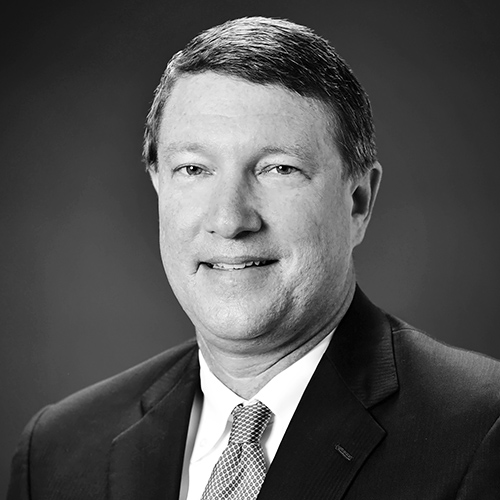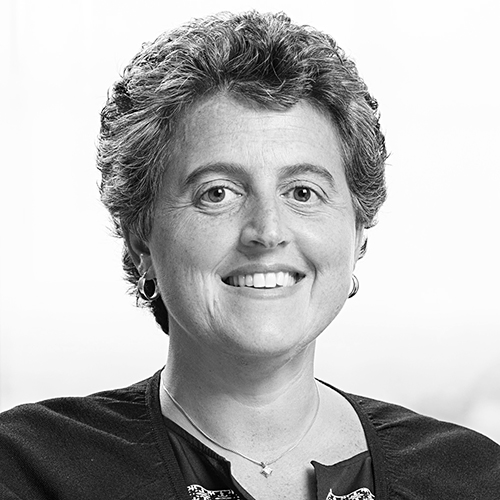Picasso, Degas, Rembrandt—masters of their craft and leaders in their fields, these artists used genius and intuition to create new ways of seeing the world. These figures are the types of people we envision as embodying the word “artist,” but the term can be much broader than that. In fact, for Ari Gabinet, no conversation about artists is complete without discussing the highly creative and innovative team of attorneys at OppenheimerFunds.
As executive vice president and general counsel at the investment firm, Gabinet’s highest priority during the last four years was to transform the legal team at OppenheimerFunds by improving efficiency and functionality while aligning with the company’s growth strategy. These goals have been crucial to realizing Gabinet’s dream of “liberating the legal team from the constraints of busywork.”
Those goals worked. “My mantra is that every person should do the highest value of work of which they are capable,” he says. “So making sure my team has time and space to focus on their highest value work is my priority.”
Integrating technology has been part of the team’s process to create that time and space by automating processes and making documents searchable. Delegating decision-making to the lowest competent level is another tactic. “Beyond that, the key is identifying exactly what we do and how we might do it more efficiently,” says Gabinet. “I want people in my department to work like artists, but I want the capacity to manage them like units of production in order to protect them from tasks that consume too much of their valuable time.”
But Gabinet knows there are certain things a computer will never be able to do better than a human, like building relationships with clients. Gabinet and his team prioritize relationships for two reasons: to better understand clients’ processes, needs, and style of communication; and to emphasize efficiency. The rule in the legal department is if it takes more than two e-mails to finish a conversation, pick up the phone.
Adaptability and creativity are keys to success in a changing mutual fund industry filled with investors who have changing needs. Rather than seeing themselves as limited by the law, Gabinet encourages his lawyers to think freely within the boundaries set by the law. But creative thinking is rarely done well in isolation, and even less so in an echo chamber, so diversity is another important component of the team’s artistry. Hearing perspectives from different cultural backgrounds, ethnicities, genders, and age groups allows for a rich and robust environment that maximizes talent and allows employees to bring their whole selves to work each day.
In the interest of developing that kind of dynamic and healthy environment companywide, OppenheimerFunds began to officially focus on making diversity in the workplace a priority nearly four years ago. When they did, other departments found an approachable and unbiased perspective in the legal department because “attorneys are trained to see every person as equal under the law.” Soon, other departments were working with legal to develop training programs and strategies for approaching changing demographics. “One of my senior lawyers, Lisa Bloomberg, led a group that developed a list of nineteen ways the company could improve its diversity, including the hiring of a chief diversity officer,” says Gabinet. “HR prioritized the list, then recruited others from other teams and started a dialogue.”
That dialogue led to training with a diversity consultant and the start of hands-on programs, such as hiring local students from underserved communities to work as interns. In September 2015, it saw the hiring of James White as head of diversity and inclusion and a subsequent revamping of the entire diversity initiative. Since then, Oppenheimer has formed four employee resource groups: Connect, representing women; Proud, representing the LGBT community; Multicultural Network for people of color, including a subcommittee for black employees; and Veterans Network for employees who have served in the military.
Gabinet not only believes that diversity is necessary for building the highest quality team of lawyers; he believes it is necessary for personal growth. “I realized a long time ago that the only way to deal with my own unconscious biases was to expose them,” he says. “Recognizing bias and walking toward it allows for growth and learning to think in new ways, as well as improving teams and business in general and stopping the perpetuation of social injustice.” This virtuous circle is one that guides Gabinet as he works to lead the diverse pallet of perspectives in legal.
“Making sure my team has time and space to focus on their highest value work is my priority.”
In many ways, Gabinet’s team of artists at OppenheimerFunds is itself a work of art—a diverse group of people from all backgrounds and walks of life who come together to support OppenheimerFunds’ growth strategy. “My motivation is to create an environment where lawyers flourish and to give them fulfilling work that they are excited to accomplish,” Gabinet says.
As their maestro, Gabinet led and lives with this belief: whether it’s an unconscious bias, a process that’s not working at its fullest capacity, or a tool that would be better in someone else’s hands — whatever is consciously observed can be changed. Awareness of technology, our surroundings, and ourselves is what allows us to be better leaders, better lawyers, better people, and even better artists.
Editor’s Note: Ari Gabinet retired from OppenheimerFunds in February 2016.
The Case for Tech
Ari Gabinet cites technology as crucial to his legal team’s development and efficiency, but the term “technology” is a wide umbrella. Modern Counsel asked Gabinet to explain further.
Modern Counsel: How has OppenheimerFunds used technology to increase process efficiency?
Ari Gabinet: Four years ago, the executive team launched a company-wide technology vision inspired by the need for a common platform for document management and protocol. We’re now in the middle of a multi-year project to improve our record management system, including search, maintenance, and purging.
MC: What are some improvements specific to the legal department?
AG: We have streamlined document creation and e-mail search and production, and we’ve set up an automated legal hold system. We’re implementing e-billing and now have internal monitoring and forecasting programs. These will soon be enhanced by technology we are implementing with the help of an outside consulting firm.
MC: How should a department implement big technology changes?
AG: People who will be affected by the changes should have the opportunity to offer input on decisions. Creating a high level of usability is crucial. And most importantly: Create a work environment where people are flexible and adaptive to change.

